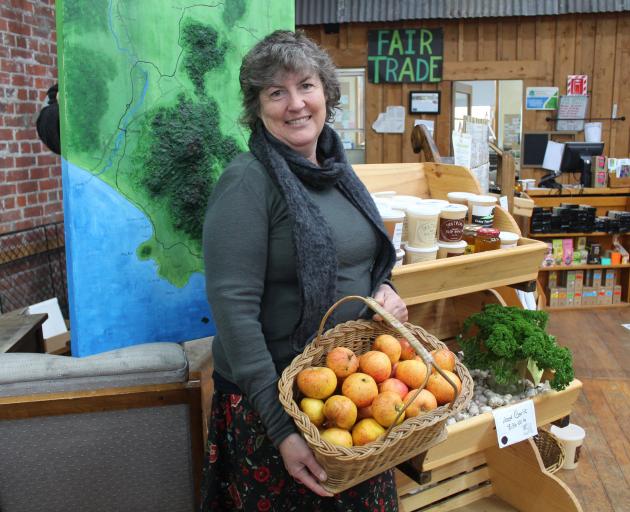
As a dead Ngai Tahu chief’s daughter wept tears of grief into Foveaux Strait, the wind god Tawhirimatea encased them in shell so generations to come could remember the grief and the danger of greed.
This is the story Ngai Tahu tell of how Bluff oysters came into being.
For Dr Hana O’Regan (Ngai Tahu) this story connects people to place and history, she told an online national Food Hui last week.
‘‘Next time you swallow a Bluff oyster you will think of that connection. How much richer is that experience?’’
It is these stories and voices she hopes to see create a new narrative around New Zealand food that is not appropriated, respects all cultures, is mutually beneficial and gives voice to those who have not had one before.
These views will form part of a dialogue beginning this month as a project called Mana Kai begins to consult with the wider food community on a National Food Roadmap for New Zealand that provides for an accessible, sustainable, affordable, nutritiously valid food system that also allows for an economic return.
The Mana Kai Initiative involves business representatives, scientists, individuals from non-government organisations in the food system and representatives from central government.
KPMG global head of agribusiness Ian Proudfoot told the hui the global food system until now has been centred on volume but its value is eroding as more and more of the world’s population becomes malnourished or obese, water availability is increasingly insecure, gender inequality persists and food wastage is high.
There are also environmental challenges around methane and degradation of soils.
The food system cannot continue this way so the question is how can the system address these issues?
‘‘We are at the point of a dramatic rethink of the food system globally. And that means we do need to look at what we are going to do in New Zealand.’’
Proudfoot sees New Zealand fitting into the future of food on a global stage in a modern regenerative food system where the effort that goes into producing food is ‘‘lifted’’.
‘‘We create a system that is very good for the environment, for people, for communities and good for creating a valuable return for the participants - but we need to be better on how we look after our animals, better on how we look after water and our soil and making sure the food we produce is delivered with care and a story and provenance.’’
It means New Zealand will have to re-think the way it does many things to ensure it earns the right to play a part in that system, he says.
‘‘It means it is not just about people overseas, it’s about making sure we feed our whole community.’’
This is the thinking that underpins Mana Kai.
‘‘What we need to get clear before we move to a food strategy, is being clear on the values and purpose of the food system - we need to be clear on what food means to us as New Zealanders.’’

‘‘We’re looking to leverage knowledge across our food system. We want to make sure we address and focus on those who are disproportionately disadvantaged, such as Maori and Pacific Islanders.’’
All aspects of the impact of food, the ‘‘triple bottom line’’, will be considered.
A group of Massey University researchers, Nitha Palakshappa, Sita Venkateswar and Heidi McLeod, have been investigating regional food networks.
‘‘Staggering amounts are exported, 86% of apples, 87% of beef, all go off-shore. Statistics like this beg the question, what are we eating here? Where is it coming from and if we are exporting that much, does everyone in New Zealand have enough?’’ Palakshappa says.
Using Taranaki as a case study, they have explored what is happening from the producer to the consumer, the sort of holistic view that is needed to inform a national strategy that is engaged and embedded.
‘‘In New Zealand, if we produce so much food why do we have food insecurity in New Zealand, around 14%?’’ McLeod says.
‘‘What we saw in Taranaki is a tendency to value export produce and this preference for distance eaters was often at the expense of feeding local populations.’’
The focus needs to be on feeding New Zealand’s population with produce grown regeneratively and locally, the researchers say.
They believe localised solutions are needed. While food tourism, boutique food products and export all have a place, there needs to be more of a priority put on recognising small local producers and feeding local.
More support is needed from all levels of government for local solutions and programmes, from farmers markets to innovative projects by small-scale producers, such as Southland’s Longwood Loop, the mobile farmers network.
‘‘A plurality of models emerge, bringing together social, economic and environmental domains that need to work together to bring about community food resilience,’’ Palakshappa says
Farmers’ markets, for example, often relied on volunteers, struggled with consistency, demand and weather issues and as a result are often precarious endeavours. So, well-established market foundations are needed to provide the consistency for both shopper and stallholders.
‘‘Local initiatives need to be supported,’’ McLeod says.
‘‘Government at all levels has opportunities to support and facilitate local growers, adjust policies and new initiatives. This would send a clear signal to the agricultural sector, actions that can deliver food security. I’d love for the country and regions to be able to say how food secure they were.’’
McLeod believes an indicator should be developed recognising how much food that is grown within a region remains in that region to feed its communities.
‘‘This is a measure of security.’’
Food security should not be an emergency response, and when thinking about what food meant to different people, access, equity and availability should be considered.
‘‘Covid-19 has demonstrated just how crucial local food economies - through local food producers, well supported through a regional food economy - are for the resilience and nourishment of the team of five million,’’ Venkateswar says.
University of Otago Food Waste Innovation research theme director Assoc Prof Miranda Mirosa also spoke online about the need to continue to lobby Government for stronger action on food waste guidance.
‘‘There are so many wins from reducing food waste, social, environmental, economic, and it’s everybody’s responsibility.’’
New Zealand Food Waste Champions want to see New Zealand work towards the United Nations Sustainable Development Goal 12.3 of halving per capita the food waste a country produces by 2030, as they believe such targets lead to change, she says.












